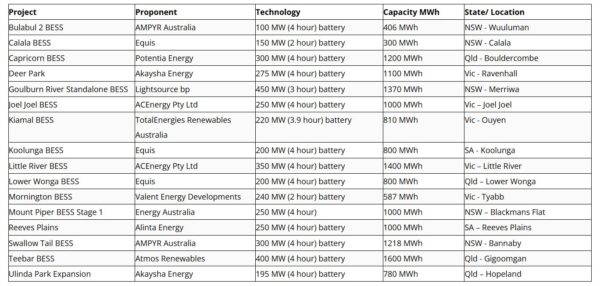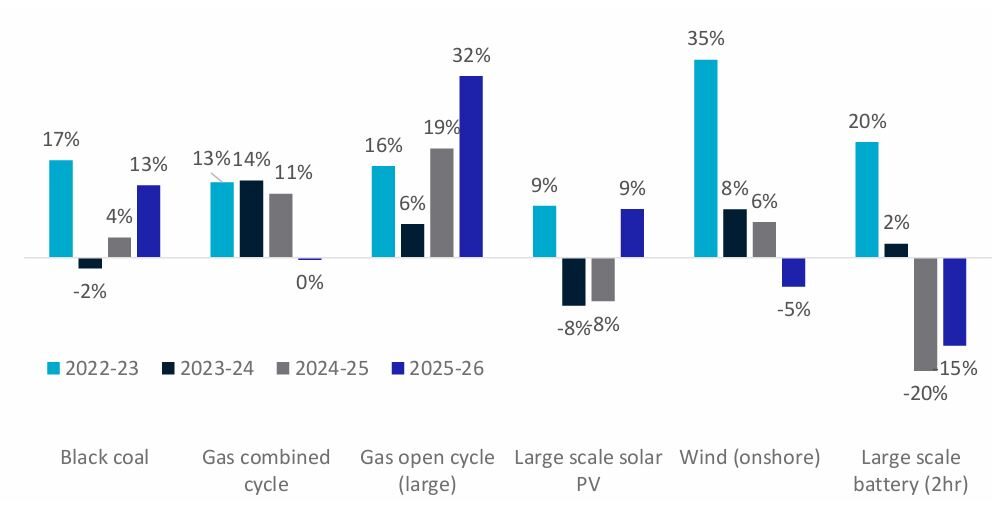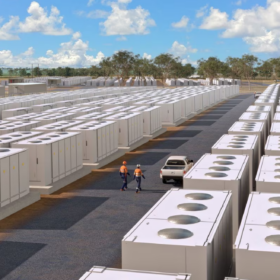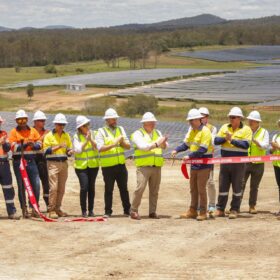The Australian government’s Capacity Investment Scheme (CIS) has delivered another boost to the nation’s dispatchable energy capability with 16 projects – all lithium-ion batteries – named as the winners of the latest tender.
CIS Tender 3 aimed to secure 4 GW of four-hour equivalent dispatchable capacity for the National Electricity Market (NEM) but exceeded expectations, attracting 124 bids totalling about 34 GW.
The 16 successful projects will deliver a cumulative capacity of 4.13 GW / 15.37 GWh across New South Wales (NSW), Victoria, Queensland and South Australia by the end of 2029. In a statement, the federal government said this capacity is enough to support the peak load of more than 3.5 million households.
Federal Energy Minister Chris Bowen said the latest tender builds on the success of previous rounds that have executed 19 agreements to date, worth 5.85 GW of capacity nationally.
“This is the latest step in the Albanese Government’s plan to rebuild Australia’s energy grid into the modern, reliable and fairer system we need,” he said.
“Our practical approach to energy is harnessing the nation’s natural advantages to deliver more affordable and more reliable energy for our country, powering new jobs in our regions and suburbs and securing billions of dollars in global investment.”
Among the winners of this tender is Akaysha Energy which has secured CIS support for its 275 MW / 1,100 MWh Deer Park battery project in Victoria and the 195 MW / 780 MWh second stage of the Ulinda Park battery energy storage system (BESS) in Queensland.
Akaysha Managing Director and Chief Commercial Officer Paul Curnow welcomed the announcement, noting that the CIS gives investors confidence, helping to move faster on delivery and bring more big batteries and renewables online sooner.
“These awards don’t just underline the critical role of big batteries in Australia’s energy future, they enhance revenue certainty, unlock investment, and enable us to deliver faster,” he said.
Singapore-headquartered Equis was another winner, securing support for three developments, including the 200 MW / 800 MWh Lower Wonga battery project in Queensland, the 250 MW / 500 MW Calala battery being built in Victoria and the 200 MW / 800 MWh Koolunga battery planned for South Australia.

Victoria-based developer ACEnergy secured contracts for its 350 MW / 700 MWh Joel Joel and 350 MW / 700 MWh Little River projects, both in Victoria, while Ampyr Australia won contracts for the 100 MW / 406 MWh extension of the Bulabul (formerly Wellington) and 300 MW / 1,218 MWh Swallow Tail projects in NSW.
The biggest project awarded a contract in this tender is the 400 MW / 1,600 MWh Teebar battery project being developed in central Queensland by Atmos Renewables.
Other winning bids came from Energy Australia, TotalEnergies, Potentia, Lightsource bp, Alinta, and Valent Energy.
Queensland is home to four winning battery projects 1.09 GW / 4.38 GWh, Victoria has five with a combined capacity of 1.33 GW / 4.89 GWh, NSW five totalling 1.25 GW / 4.29 GWh, and South Australia two projects totalling 450 MW / 1.80 GWh.
Bowen said the 16 projects are estimated to comprise $3.8 billion (USD 2.54 billion) in local content, generate 1,900 construction jobs, more than 100 operations and maintenance jobs, $218.8 million in First Nations benefits, and $36 million in shared community benefits, along with $33.6 million of local steel.
The tender is one of a number being held as part of the CIS, which now seeks 40 GW of renewable generation and dispatchable capacity to support system reliability as ageing coal-fired power stations retire and to help deliver the Australian government’s 82% renewable electricity target by 2030 target.
Regular competitive tenders are to be held approximately every six months until 2027.
This content is protected by copyright and may not be reused. If you want to cooperate with us and would like to reuse some of our content, please contact: editors@pv-magazine.com.









By submitting this form you agree to pv magazine using your data for the purposes of publishing your comment.
Your personal data will only be disclosed or otherwise transmitted to third parties for the purposes of spam filtering or if this is necessary for technical maintenance of the website. Any other transfer to third parties will not take place unless this is justified on the basis of applicable data protection regulations or if pv magazine is legally obliged to do so.
You may revoke this consent at any time with effect for the future, in which case your personal data will be deleted immediately. Otherwise, your data will be deleted if pv magazine has processed your request or the purpose of data storage is fulfilled.
Further information on data privacy can be found in our Data Protection Policy.